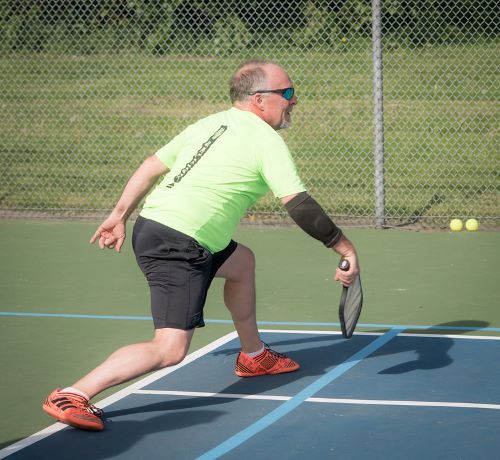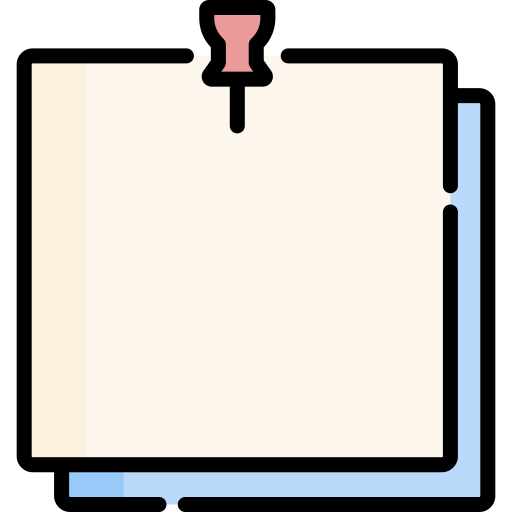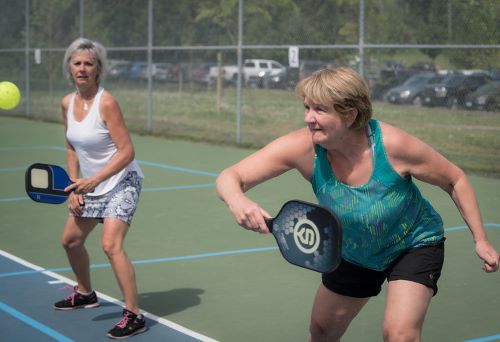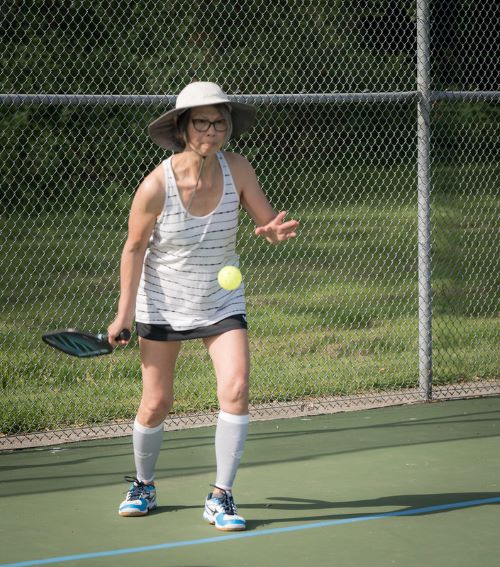Pickleball is similar to tennis, ping-pong, and badminton. Having similar principles in the game, you would expect to see similar biomechanics as well—most especially when it comes to how you hit and serve the ball.
In general, racket sports have different methods of service. And each sport has its own famous or commonly used serve style, like the overhead strike for tennis. Backhand serves are unusual in tennis but are allowed. So the question is, can you serve backhand in pickleball?
Let’s find out.
Are Backhand Serves Legal?
The backhand serve is legal in pickleball. In the USAPA Official Rulebook and the International Federation of Pickleball (IFP) Guidelines, there is nothing that states that you are not allowed to do backhand serves.
However, you do have to familiarize yourself with the basic rules of serving first. There are a few rules and guidelines you must follow when you serve. Failure to follow these rules will result in a penalty and loss of the rally.
Backhand Serves In Pickleball—The Rulebook
In pickleball, there are two official types of serves mentioned in the rulebooks: the volley and the drop serve. These are the only allowable serves in the game and they can be performed either using a forehand or backhand stroke.
Let’s go through each serve briefly:
The Volley Serve
The volley serve involves hitting the ball without letting it bounce off the playing surface first. Take note of these principles:
- Your arm holding the paddle must move in an upward arc when you hit the ball. In sports terms, this is called an underhand motion. You cannot hit from the side or from above, it must always come from the bottom upwards.
- The highest point of the paddle head must not be higher than the highest part of your wrist. To make things easier, always point your paddle to the floor when you serve.
- When you serve, the contact point between the ball and the paddle must always be below the waistline. This is true for both backhand and forehand serves.
The Drop Serve
As the name suggests, the drop serve is when you drop the ball first and let it bounce on the playing field once before hitting it. You must be aware of the following:
- The ball can only be dropped from one hand. You are allowed to drop it off the paddle face ONLY when it is at a natural height, such as the height of your arms.
- You cannot throw the ball downwards or upwards. You are only allowed to let it drop naturally from your hand.
General Rulings for Pickleball Serves
Foot (or Feet) on the Ground
Unlike tennis, you can’t jump serve in pickleball. This is actually understandable because tennis serves are overhead swings that need added verticality. In pickleball, however, you must have at least one (1) foot on the ground as you serve, and you must be behind the baseline.
Aim Diagonally
Before serving, players must face diagonally across each other. You are not allowed to serve perpendicularly from your opponent, nor serve within the baseline. This is similar in tennis where each half of the court is divided into two serving zones.
You must be in the same zone as your opponent. For example, if you are serving from the right zone of your court, then your opponent should be in his right zone as well.
No Second Chances
With the pickleball service being relatively easier than tennis, you aren’t given a second chance when you make a mistake in pickleball. Once you commit a faulty serve, the next serve immediately goes to either your partner (for pickleball doubles) or your opponent (for pickleball singles).
Choosing Between the Backhand and Forehand
Unusual serves are unusual for a reason. A backhand serve is legal and within the rules of the game, but it’s not as popular and isn’t the best one to use at all times.
Still, this doesn’t mean that you shouldn’t learn how to serve backhand at all. Mixing both forehand and backhand serves keeps your opponents on their toes, anticipating which one you will be using next.
The important factor in backhand serves is knowing when you should use it in the course of an actual game. Backhand serves are tricky and are best used when your opponent least expects it, like after a long rally or nearing the end of a long game. A sudden backhand serve will definitely catch your opponent off-guard.
What Makes a Backhand Serve Different?
Now, what makes a backhand serve different? Here are a few pros and cons between the two serves:
| Forehand Serve | Backhand Serve |
|---|---|
| Solid and reliable. The norm in typical pickleball serves as it is easier to be consistent with this serve. | Tricky serve that is not easy to deal with by the less experienced. |
| It is easier to swing and hit the ball using the forehand. | The serve usually catches the opponents off guard, especially when the game is composed mostly of forehand serves. |
| You can hit stronger and more powerful serves. | It forces you to turn your body, which might cause physical strain in the long run. |
| Opponents can easily anticipate this serve. | It is hard to be consistent with this serve and requires a lot more practice. |
| The serve requires less effort and bodily movement in serving. | Having this serve in your arsenal will keep your opponents guessing. |
Overall, being able to do both serves will make you a tricky player to play against. Once you get a hang of knowing when to pull out the backhand serve, you will be able to get a few easy points off a serve every now and then.
Tips for a Tricky Backhand
We established earlier that it is not easy to serve backhand, which is why people usually opt for the forehand. But again, backhand serves make you an unpredictable player and are therefore good to have in your skillset.
Learning how to do a backhand serve will take lots of time and practice, but you’ll get the hang of it as you progress. Luckily for you, we’re here to help.
Here are some tips on how to hit the tricky backhand serve in pickleball:
1 . Solid Arm Positioning
Before you serve, make sure your arms are positioned in a way that a backhand serve is easily executed. To do this, cross your arms together, with your non-dominant arm (the one holding the ball) under your dominant arm (the one holding the paddle).
Once you’ve established a cross-arm position, position your paddle near the shoulder of your non-dominant arm to ensure a wider swing.
2. Swing in a U-Shape
As mentioned earlier, you can only serve through an upward swing. So, once your paddle is positioned near your shoulder, swing as if you are drawing a wide letter U across your body. Go down, then up.
Don’t worry if you don’t get it the first couple of swings. Just practice until you get the hang of the movement. You’ll get to use it in a game in no time.
3. Precision Practice
Once you’ve gotten the hang of serving with the backhand, try to improve your accuracy by hitting a certain spot on the court again and again. Do this until you’re able to consistently hit the spot you’re aiming for. After mastering one spot, try another until you are accurate enough to aim for various spots.
If you are experienced enough, try to consistently aim for the sideline. Hitting the sideline forces your opponent to move out of their position, giving you an advantage in the next shot.
General Tips on Serving in Pickleball
Here are some general tips that you must take into consideration before serving, regardless of the method:
- Don’t stick to one target area in serving.
Be diverse. Learn how to hit different areas of the court when you serve. However, be cautious of your opponent’s serving zone which is encompassed by the middle line and the boundary lines. Having the ball land outside that zone during service is considered a fault.
- Trying to ace every serve won’t help.
Trust me, attempting this will make your game harder to play instead. Keep the game flowing by hitting simple yet solid serves. Once you get the feel for it, then you can try to hit an ace.
- Practice, practice, and practice.
As the saying goes, “practice makes perfect”. Once serving becomes second nature to you, you can focus more on other aspects of pickleball and become a more well-rounded player.
Wrapping Up
Backhand serves aren’t typical serves in pickleball as they are harder to do consistently. Being an uncommon serve means there’s a higher chance you can catch your opponent off-guard when you use it in an actual game.
Mastering the backhand serve and adding it to your arsenal can definitely help you win more pickleball matches. You’ll keep your opponents on their toes and wondering what your next move will be. It all boils down to knowing when to use a backhand serve, and your ability to pull it off when it matters.




































